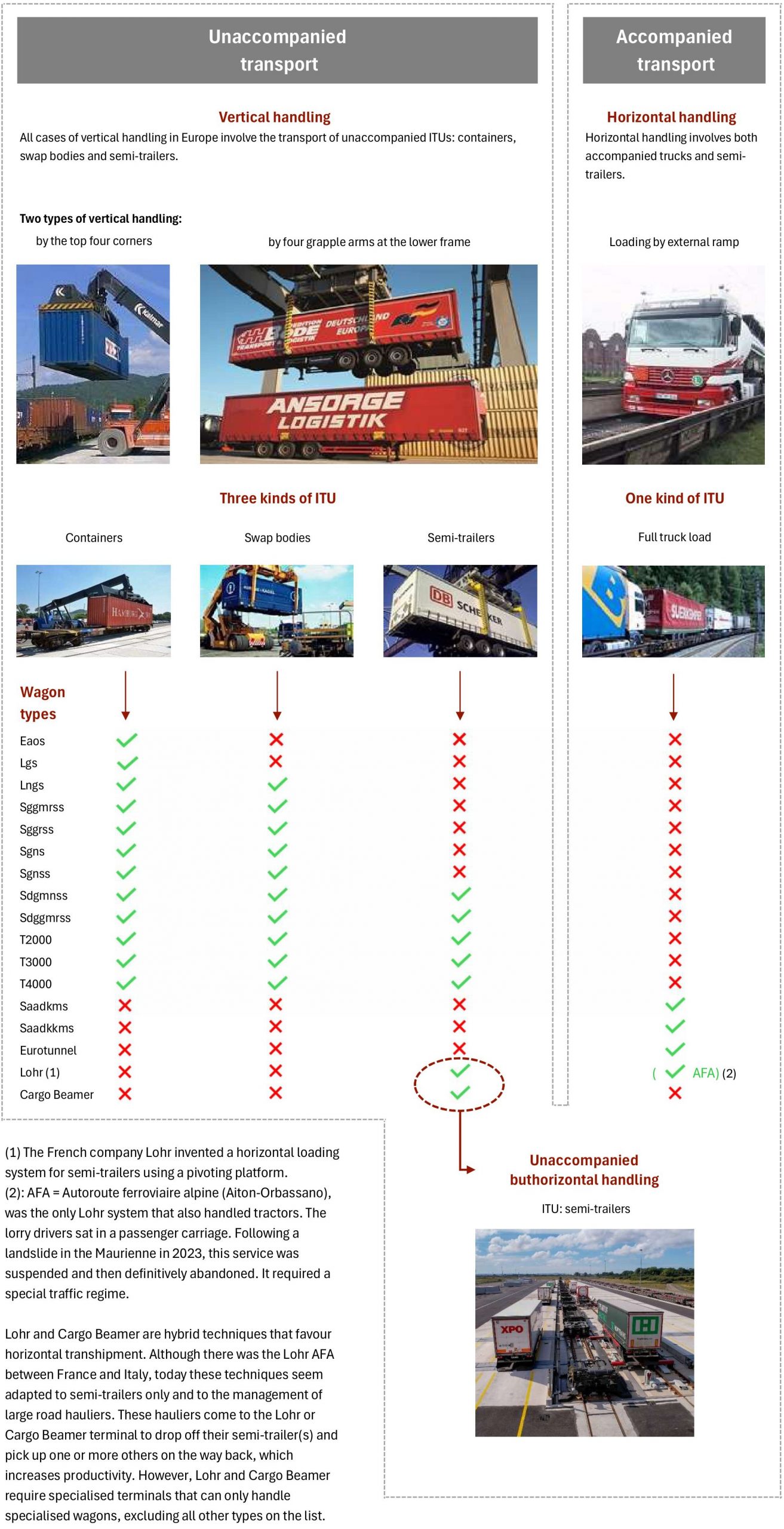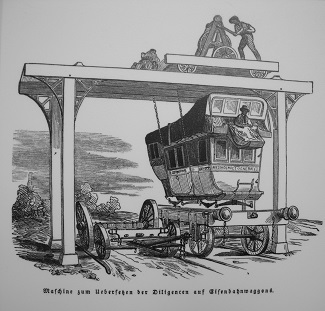Freight services • Intermodal transport
Note: For educational purpose only. This page is meant purely as a documentation tool and has no legal effect. It is not a substitute for the official page of the operating company, manufacturer or official institutions. It cannot be used for staff training, which is the responsibility of approved institutions and companies.
In brief
Intermodal transport is the ability of a container to travel by road, rail or waterway. From the outset :
• a distinction must be made between unaccompanied transport, which is in the majority, and accompanied transport, which is very much in the minority on our routes;
• that a distinction must be made between vertical handling by crane and horizontal handling by ramp;
• that a difference is made between ocean containers and land swap bodies, using the pre-emption method;
• that only wagons of the Sdgmnss & other types can accept all three types of UTI for vertical transhipment;
• that the rolling motorway is a special type of operation for accompanied transport.

This summary table, which is not exhaustive, shows that Sdgmnss wagons and their derivatives, as well as T2000 to 4000 wagons and their derivatives, are the most profitable in that they have the capacity to accept the three ITUs: maritime containers, swap bodies and semi-trailers. The other types of wagon have more restrictions but often have lower maintenance and purchase costs. An operator specialising in maritime containers could therefore make do with wagons of the Lngs, Sggmrss and derivatives types, which are less sophisticated and better suited to its needs.
History

Logistics goes back a long way, with its origins in the military aspects of the essential supply of men and materials to a war front. The material aspects opted for very elaborate transhipment techniques, some of which were later used in the civilian sector. Some attempts were made to transfer a passenger box from a train to a stagecoach, as shown in the photograph opposite:
This example already shows the technique used: a box being transferred by a gantry crane. It was adopted much later, in the early 50s, by an American truck driver from North Carolina, Malcom McLean. Tired of the interminable waits in ports and the methods used to load cotton, crate by crate, he first imagined handling the lorry in one go by loading it directly onto a ship in 1956. Realising that the chassis and wheels were useless at sea, he proposed leaving the truck on the quayside and loading only the crate: the container was born, and an industrial revolution was underway.
La normalisation ISO du conteneur
This standardisation based on the decimal metric system owes much to the IEC of 1903, which actively contributed to the International System of Units (SI). The ISO International Standards Organisation is an offshoot of the UN and was set up in the early 1950s. It currently has a catalogue of over 15,000 standards, including those governing maritime containers, the first standards for which were drawn up in 1957.
They were based on the main dimensions of American road vehicles. In the meantime, the European railways were codifying transhipment pallets based on the characteristics of European road vehicles. As you can imagine, these dimensions differed from their American counterparts. From meeting to meeting, the American codified container was imposed on the world, and was finally made official around 1967 by the document TC104, which is still in force today. These standards have an impact on all related constructions, from container carriers to grips.
On trucker side: a different technical
While the container is essentially a maritime UTI, truckers became interested in loading lorries onto trains. The original system was to load the entire trailer onto a wagon fitted with a pocket. Later, the truck body itself, without the chassis, was loaded onto a wagon. The big difference is that truck bodies are compatible with loads of up to 33 standardised euro-pallets (3×11), something impossible with the ISO maritime container. This is why the latter has remained confined to the maritime world, while road UTIs coexist in parallel with European standards. Let’s take a closer look. 🟧
[TOP]
Freight services • Lexical
